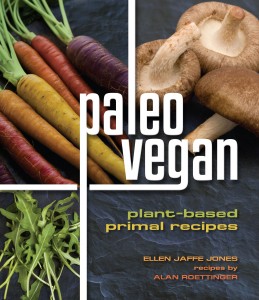I first came to know about this at a presentation by Dr. Neal Barnard, at the NAVS 2010 Summerfest, which I found very inspiring on several levels. It struck me right away, that nothing could sum up the Mesoamerican diet like beans, corn, and squash. Of course, there are tomatoes, chiles, and specific herbs that complete the picture, but the lyrically-named “three sisters” are the foundation. Then, to hear of this ingenious gardening method, and to recognize the ancient, simple wisdom that made it possible, was thrilling to me. Dr. Barnard showed slides of his gardening efforts, with successful three sisters mounds, and this made me want to learn gardening!
As it happens, my wife is the gardener and my best contribution to date has been to help in minor ways, like watering on request (I never remember!), or digging, carrying rocks and dirt, and other menial tasks that prevent me from doing any damage. Basically, she gardens, I cook. Not a bad arrangement. We haven’t (yet!) gotten around to figuring out how three sisters mounds could work on our steep granite hillside. Maybe next year.
But gardening aside for the moment, I’ve been working on several recipes that incorporate corn, beans and squash–not only because I like the idea, but because they really do complement one another well. I have a terrific soup with white corn, black beans, and kabocha squash, which is already in the manuscript for my next cookbook. And I just recently completed another dish, with corn, pinto beans and butternut squash:
 |
| Three Sisters Stack |
For this dish, I used the thick, cylindrical portion of a large butternut squash. I peeled it and cut 12 disks about 1/4-inch thick, browned them lightly in coconut oil, and finished cooking them in a low oven. These supplied the structure for the stacks.
For the filling, I sauteed some onion and garlic in a pot until soft. Then I cut the kernels off 2 ears of sweet corn, scraped the starch off the cobs (using the back of the knife) and added it all to the pot, along with a few spoonfuls of ground chimayo chile, a small gob of chipotle chile puree, and a little salt. I had cooked some pinto beans the day before, so I poured a little of the cooking liquid over the vegetables to keep them from sticking. As soon as the vegetables were done, I added some of the beans. I cooked the mixture until nearly all the liquid was absorbed, so it wouldn’t squish out between the squash layers and collapse the stacks.
Assembly was easy. First, I lay a squash disk on each plate (it helps if these are warmed, to keep the food from getting cold). I heaped some of the bean and corn mixture onto the center, placed another disk on top, mashing it down gently. Then I repeated the layers one more time. To complete the presentation, I surrounded the stacks with diced red onion, tomato, and avocado, and squeezed some fresh lime juice over them. Then I sprinkled chopped cilantro all around and drizzled some oregano oil in a circle, over the raw vegetables.
Although coconut is not part of the Southwestern cuisine, using this oil in place of the more traditional lard gave the squash an extra-sweet rich taste that held up well against the full-flavored, spicy filling. The combination of those hot, cooked stacks and cool, raw vegetables made for some fun eating, let me tell you. My wife loved it too (that’s important to me).
.





